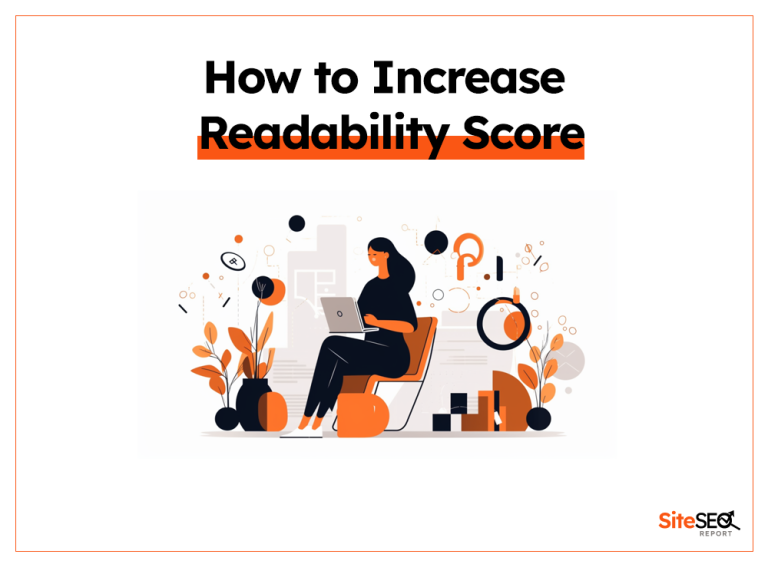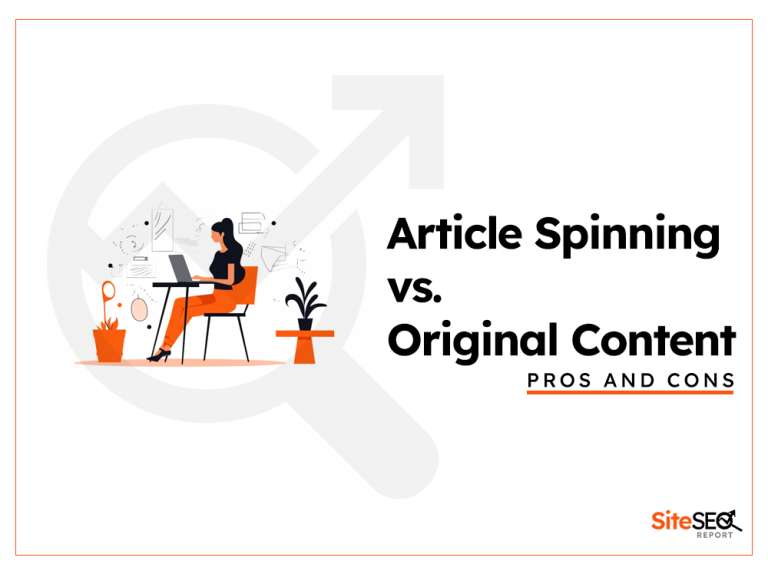In the ever-evolving world of SEO, understanding the nuances can make all the difference. One such nuance is LSI keywords. But what are they, and why do they matter?
Let’s dive deep into the world of LSI keywords.
What are LSI Keywords?
LSI stands for Latent Semantic Indexing. LSI keywords are terms and phrases related to the main keyword you’re targeting. They’re not necessarily synonyms but are contextually linked to your primary keyword. For instance, if your main keyword is “apple,” LSI keywords might include “fruit,” “orchard,” “pie,” and “cider.”
Why are LSI Keywords Important?
Contextual Understanding: Search engines use LSI keywords to understand the context of content. This helps them deliver more accurate search results.
Improved Rankings: Incorporating LSI keywords can enhance your content’s relevancy, potentially improving its search engine ranking.
Reduced Over-Optimization: Relying solely on primary keywords can lead to keyword stuffing. LSI keywords offer a natural way to diversify keyword usage.
How to find LSI Keywords?
Google’s Autocomplete: Start typing your primary keyword into Google’s search bar. The suggestions that appear can be potential LSI keywords.
Related Searches: At the bottom of Google’s search results, you’ll find a “Searches related to…” section. This area often contains LSI keyword suggestions.
LSI Keyword Tools: Tools like LSIGraph and Twinword Ideas can generate LSI keywords related to your primary term.
How to Use LSI Keywords in Your Content?
Naturally Integrate: Don’t force LSI keywords into your content. They should fit naturally, enhancing readability.
Diversify Content: Use LSI keywords to expand on topics, providing comprehensive coverage.
Meta Descriptions & Titles: While the main focus should be on content, integrating LSI keywords into meta descriptions and titles can be beneficial.
Alt Text for Images: Using LSI keywords in the alt text of images can enhance SEO while providing context to search engines about the image content.
Common Misconceptions about LSI Keywords
They’re Just Synonyms: While some LSI keywords might be synonyms, many are simply related terms that provide context.
More is Better: Like any aspect of SEO, quality trumps quantity. It’s about using the right LSI keywords, not stuffing as many as possible.
Google’s Take: Does It Use LSI?
Google is a giant in the search world. Many wonder: does it use LSI? The answer is no. Google has made it clear; they’ve moved past LSI. They use advanced methods that go beyond simple patterns.
LSI is like an old tool in a modern workshop. While useful in its time, there are now more advanced tools in Google’s shed. Algorithms like BERT now guide Google’s understanding. It’s crucial to know this difference.
Knowing that Google doesn’t rely on LSI changes the SEO game. No longer can one hope to play the system with old tricks. Google now reads and understands in sophisticated ways.
John Mueller of Google stated on X: “There’s no such thing as LSI keywords.” So, Google doesn’t rank using LSI. Concentrate on producing good content for users instead of chasing keyword tactics.
LSI vs. Google’s Advanced Algorithms
Google’s technology is always advancing. LSI is old; Google’s current algorithms are new. They’ve got tools that see deeper, understanding more than patterns. They grasp context.
LSI was a milestone, but Google has surpassed it. They’ve adopted tools like BERT and neural networks. These dive into the nuances of language. They see what’s behind the words.
While LSI was about connections, Google’s methods are about understanding. It’s not just about seeing patterns. It’s about knowing the user’s intent.
The True Power of LSI in Search
LSI is powerful in its own right. It sees how terms connect in texts. This understanding can shape content, making it resonate. But it’s essential to know its limits.
Today, LSI is one tool in a vast toolkit. In the right hands, it shines. But it isn’t the only way to see text. There are other methods, each with its strength.
To use LSI well, one must understand its place. It offers insights, but it’s part of a bigger picture. It’s a piece in the search puzzle.
LSI’s Relationship with Modern SEO
SEO today is complex. It’s not just about keywords. It’s about delivering what the user wants. LSI plays a role, but it’s just one part. The world of SEO has grown.
Using LSI can guide content. It helps see how words connect. But modern SEO looks beyond this. It sees user intent, experience, and context.
In the SEO toolkit, LSI is one instrument. It has its tune. But a good SEO strategy listens to the entire orchestra. It harmonizes all the tools.
Crafting Content: Beyond the LSI Hype
Good content speaks to the reader. It answers questions. It provides value. LSI can help shape this content, but it shouldn’t be the sole guide. Writing is an art.
The best content feels natural. It flows. It’s not forced. LSI can offer guidance, but the writer’s voice is paramount. Always prioritize the reader’s needs.
Too much LSI can muddy the waters. The content can feel fake. Keep it genuine. Use related terms, but don’t force them. The aim is authentic communication.
Risks of Over-relying on LSI Keywords
Relying too much on LSI is a trap. Content can lose its soul. It becomes about patterns, not meaning. This isn’t good for the reader or SEO.
LSI isn’t a magic formula. It’s a tool. Like any tool, misuse can lead to problems. Content should be genuine. It should speak to the reader, not algorithms.
Remember, search engines reward good content. They see when content is forced. They reward authenticity. Balance LSI with genuine writing.
Evaluating Your Content: LSI, User Experience, and Google’s View
Reviewing content is essential. Ask: does it serve the reader? Does it feel natural? LSI can be a guide, but it shouldn’t be the only measure. Look at the bigger picture.
Google values user experience. So, while LSI can shape content, user satisfaction is key. Google’s algorithms are advanced. They see more than patterns; they see value.
Good content is a balance. It uses LSI insights but prioritizes user needs. Always aim for this balance. Google will reward it.
Primary Keyword and LSI Keywords – Examples
| Primary Keyword | LSI Keywords |
|---|---|
| SEO | Search engine optimization, Google ranking, SERP, organic traffic, keyword research |
| Backlinks | Anchor text, link building, dofollow, nofollow, link juice, domain authority |
| Content Marketing | Blog posts, infographics, audience engagement, content strategy, storytelling |
| PPC | Pay-per-click, Google Ads, ad campaign, CPC, ad bidding, conversion rate |
| E-commerce | Online shopping, cart abandonment, product listings, online store, payment gateway |
| Mobile Optimization | Responsive design, mobile-friendly, viewport, AMP, mobile-first indexing |
| Keyword Research | Long-tail keywords, search volume, keyword difficulty, keyword intent, search demand |
| On-page SEO | Meta tags, header tags, internal linking, URL structure, page speed |
| Off-page SEO | Guest posting, social signals, brand mentions, influencer outreach, link equity |
| Local SEO | Google My Business, local citations, NAP consistency, local backlinks, reviews |
| Technical SEO | XML sitemap, robots.txt, structured data, canonical tags, 404 pages |
| User Experience (UX) | Site navigation, mobile usability, page load time, bounce rate, user interface |
| Conversion Rate | Call-to-action, landing page, A/B testing, sales funnel, lead magnet |
| Social Media Marketing | Engagement rate, social shares, hashtags, content calendar, influencer partnerships |
| Affiliate Marketing | Commission, affiliate link, referral traffic, affiliate network, passive income |
| Email Marketing | Open rate, click-through rate, email list, newsletter, drip campaign |
| Video Marketing | YouTube SEO, video thumbnails, watch time, video transcript, engagement metrics |
| Web Hosting | Uptime, server response time, CDN, shared hosting, dedicated server |
| Domain Authority | Moz, page authority, link profile, trust score, ranking potential |
| Page Rank | Backlink count, Google algorithm, site quality, nofollow links, link distribution |
| Analytics | Bounce rate, user behavior, traffic sources, real-time tracking, audience demographics |
| Voice Search | Voice assistants, natural language processing, conversational queries, voice-activated devices |
| Chatbots | AI-driven, customer support, instant messaging, response time, user queries |
| Virtual Reality (VR) | Immersive experience, VR devices, 360-degree content, interactive media, augmented reality (AR) |
| Artificial Intelligence | Machine learning, neural networks, predictive analysis, automation, natural language processing (NLP) |
| Web Design | User interface, responsive layout, typography, color theory, CSS frameworks |
| Web Development | Front-end, back-end, full-stack, programming languages, frameworks |
| CMS | Content management system, WordPress, Joomla, Drupal, site templates |
| E-A-T | Expertise, authority, trustworthiness, Google guidelines, content quality |
| Core Web Vitals | Largest Contentful Paint, First Input Delay, Cumulative Layout Shift, user experience, page speed |
This table provides a comprehensive look into the vast world of SEO and related terms, showcasing how primary keywords can be associated with various LSI keywords to give context and depth to the main topic.
Frequently Asked Questions
What’s the difference between long-tail keywords and LSI keywords?
While both provide context, long-tail keywords are typically longer phrases that are less common but very specific, whereas LSI keywords are terms related to the main keyword, offering broader context.
How does Google use LSI keywords for ranking?
Google doesn’t use LSI keywords for ranking. John Mueller from Google confirmed on X, saying, “There’s no such thing as LSI keywords.” It’s vital to focus on quality content that serves users rather than on specific keyword techniques.
Can LSI keywords improve my content’s user experience (UX)?
Yes, by naturally integrating LSI keywords, you can create richer, more informative content that enhances the user experience.
How do LSI keywords relate to voice search optimization?
Voice searches are often conversational. Using LSI keywords can help match the natural language processing used in voice search, making your content more likely to be a relevant result.
Are meta tags and LSI keywords connected in any way?
While meta tags describe a page’s content, incorporating LSI keywords can make them more effective and contextually relevant to search engines.
How do I differentiate between primary keywords and LSI keywords in analytics?
In analytics, primary keywords are the main terms you’re targeting. LSI keywords will appear as related terms that drive traffic but might not be your primary focus.
Can using LSI keywords reduce the risk of keyword stuffing?
Absolutely. By diversifying your content with LSI keywords, you can avoid over-relying on primary keywords, reducing the risk of keyword stuffing.
How do LSI keywords impact content marketing strategies?
Incorporating LSI keywords can make content more comprehensive and relevant, potentially increasing its reach and engagement in content marketing campaigns.
Is there a specific number of LSI keywords I should use in my content?
There’s no fixed number. The key is to ensure they fit naturally and enhance readability, rather than forcing them into the content.
How do chatbots and AI-driven tools recognize LSI keywords?
Through machine learning and natural language processing, AI-driven tools can identify and understand the context of LSI keywords, improving their interactions and responses.
Conclusion
LSI keywords play a pivotal role in modern SEO. They help search engines understand context, improve content relevancy, and offer a natural way to diversify keyword usage. By understanding and integrating LSI keywords effectively, you can craft content that’s not only valuable to readers but also optimized for search engines.






